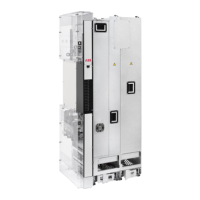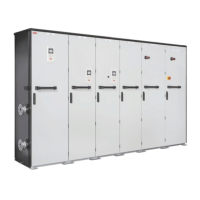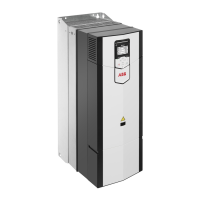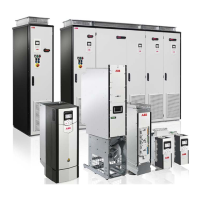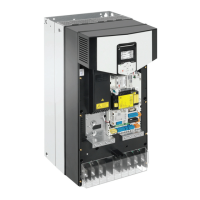1.
P
br
≤ P
br,max
2.
P
br
≤ (P
br,max
× 60 s)/(4 × 30 s) = 0.5 × P
br,max
t
t = 180 s
t
br
= 30 s
P
br
P
br,max
600 s
-> The maximum allowed braking power for the cycle is 50% of the rated value given
for the reference cycle. This fulfills also condition 1.
Selecting and routing brake resistor cables
Use the same cable type for the resistor cabling as for the drive input cabling to ensure that
the input fuses also protect the resistor cable. Alternatively, a two conductor shielded cable
with the same cross-sectional area can be used.
■ Minimizing electromagnetic interference
Obey these rules in order to minimize electromagnetic interference caused by the rapid
current changes in the resistor cables:
• Shield the braking power line completely, either by using shielded cable or a metallic
enclosure. Unshielded single-core cable can only be used if it is routed inside a cabinet
that efficiently suppresses the radiated emissions.
• Install the cables away from other cable routes.
• Avoid long parallel runs with other cables. The minimum parallel cabling separation
distance is 0.3 meters (1 ft).
• Cross the other cables at 90 degree angles.
• Keep the cable as short as possible in order to minimize the radiated emissions and
stress on chopper IGBTs. The longer the cable the greater the radiated emissions,
inductive load and voltage peaks over the IGBT semiconductors of the brake chopper.
Note: ABB has not verified that the EMC requirements are fulfilled with custom brake
resistors and cabling. The customer must consider the EMC compliance of the complete
installation.
■ Maximum cable length
The maximum length of the resistor cable(s) is 10 m (33 ft).
■ Placing the brake resistors
Install the resistors outside the drive in a place where they are able to cool effectively.
Arrange the cooling of the resistor in a way that
Resistor braking 231
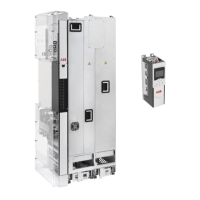
